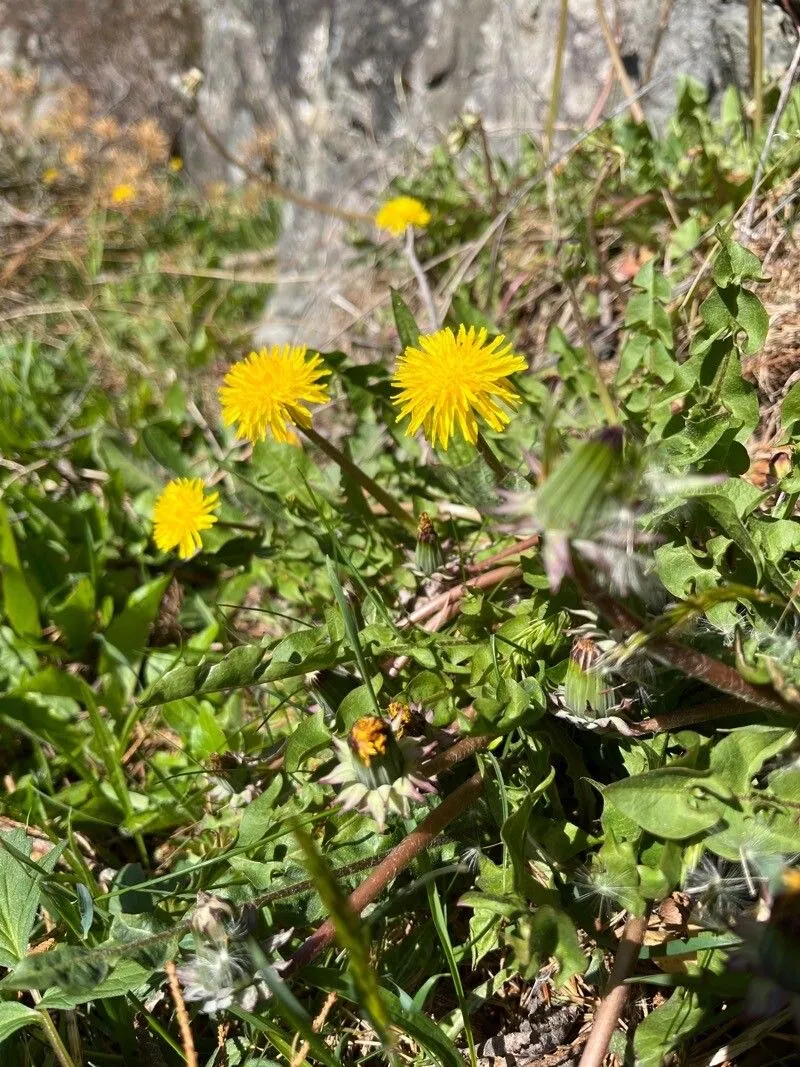
Author: Dahlst.
Bibliography: Ark. Bot. 9(10): 46 (1910)
Year: 1910
Status: accepted
Rank: species
Genus: Taraxacum
Vegetable: False
Observations: Europe
The Orange-tipped dandelion, scientifically known as Taraxacum obliquilobum, is a captivating member of the Asteraceae family, widely observed throughout Europe. This intriguing species was first documented in 1910 by the botanist Dahlst., whose detailed account was published in Arkiv för Botanik (Volume 9, Issue 10, Page 46).
Distinctive for its vibrant orange-tipped flowers, the Orange-tipped dandelion stands out among its dandelion relatives. Its inflorescence flaunts a gradient from the characteristic yellow typically associated with dandelions to a striking orange at the petal tips. This unique coloration not only adds to its visual appeal but also differentiates it from other species within the Taraxacum genus.
The plant thrives in various habitats across the European continent, populating meadows, grasslands, and roadside verges. It is well-adapted to temperate climates and often flourishes in nutrient-rich, well-drained soils. The rosette of deeply lobed, oblique leaves forms a basal clump from which the flower stalks arise, showcasing the plant’s hardy nature and its ability to compete with surrounding vegetation.
Ecologically, the Orange-tipped dandelion plays a vital role in its ecosystem. It serves as a valuable food source for a range of pollinators, including bees and butterflies, which are drawn to its nectar-rich flowers. Additionally, its seeds provide nourishment for various bird species, ensuring the continuation of its lifecycle through effective seed dispersal.
In terms of its medicinal properties, much like other dandelions, Taraxacum obliquilobum may also possess beneficial compounds. These may include vitamins, minerals, and antioxidants, largely concentrated in its roots and leaves, historically used in traditional herbal remedies.
Overall, the Orange-tipped dandelion is a remarkable plant that not only adds a splash of color to the European landscape but also contributes significantly to ecological stability and has potential medicinal uses. Its unique characteristics and contributions make it a noteworthy subject of study and appreciation within the botanical community.
Dan: uglet vejmælkebøtte
Eng: orange-tipped dandelion
Swe: trollmaskros
En: Orange-tipped Dandelion
Da: Uglet vejmælkebøtte
Fr: Pissenlit
Sv: Trollmaskros
Taken May 7, 2022 by Terje Norli (cc-by-sa)
Taken May 7, 2022 by Terje Norli (cc-by-sa)
Taken May 7, 2022 by Terje Norli (cc-by-sa)
Taken May 7, 2022 by Terje Norli (cc-by-sa)
Ph maximum: 6.5
Ph minimum: 5.5
Light: 8
Atmospheric humidity: 5
Soil nutriments: 6
Family: Myrtaceae Author: (F.Muell.) K.D.Hill & L.A.S.Johnson Bibliography: Telopea 6: 402 (1995) Year: 1995 Status:…
Family: Rubiaceae Author: Pierre ex A.Froehner Bibliography: Notizbl. Bot. Gart. Berlin-Dahlem 1: 237 (1897) Year:…
Family: Sapindaceae Author: Koidz. Bibliography: J. Coll. Sci. Imp. Univ. Tokyo 32(1): 38 (1911) Year:…
Family: Asteraceae Author: A.Gray Bibliography: Pacif. Railr. Rep.: 107 (1857) Year: 1857 Status: accepted Rank:…
Family: Fabaceae Author: Medik. Bibliography: Vorles. Churpfälz. Phys.-Ökon. Ges. 2: 398 (1787) Year: 1787 Status:…
Family: Aspleniaceae Author: (Cav.) Alston Bibliography: Bull. Misc. Inform. Kew 1932: 309 (1932) Year: 1932…